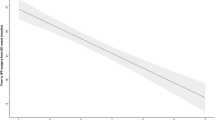Abstract
Diabetes mellitus (DM) and erectile dysfunction (ED) are common health problems that markedly increase in prevalence and incidence with advancing age. DM is a known risk factor for developing ED; however, among men with ED it is unknown if DM alters the need for more invasive therapies. We sought to determine whether DM is associated with increased ED severity, reduced effectiveness of first-line (oral) therapies, and therefore higher utilization of second- and third-line therapies. The Inovus I3 database was queried to identify men with ED. Claims were followed for 48 months. Men with incomplete follow-up data and those diagnosed with DM after ED diagnosis were excluded from analysis. Rates of second-line (penile suppositories or injectables) and third-line (penile prostheses) ED therapies were compared between men with and without preexisting DM. Risk of progressing to second- and third-line therapies associated with DM was assessed with logistic regression and Kaplan–Meier analysis. From 1 January 2002 to 31 December 2006, 136 306 men were identified with prevalent and incident ED. Among this group, 19 236 men had DM that preceded their ED diagnosis. Men with DM were more than 50% more likely to be prescribed secondary ED treatments over the 2-year observation period, and more than twice as likely to undergo penile prosthesis surgery. Among a large population-based cohort of men with ED, those with DM are more likely to require more aggressive treatments. These data suggest that ED among men with diabetes may be less responsive to first-line treatments (oral agents), worsen more rapidly, or both.
This is a preview of subscription content, access via your institution
Access options
Subscribe to this journal
Receive 8 print issues and online access
$259.00 per year
only $32.38 per issue
Buy this article
- Purchase on Springer Link
- Instant access to full article PDF
Prices may be subject to local taxes which are calculated during checkout


Similar content being viewed by others
References
NIH Consensus Conference. Impotence. NIH Consensus Development Panel on Impotence. JAMA 1993; 270: 83–90.
Lue TF . Erectile dysfunction. N Engl J Med 2000; 342: 1802–1813.
Feldman HA, Goldstein I, Hatzichristou DG, Krane RJ, McKinlay JB . Impotence and its medical and psychosocial correlates: results of the Massachusetts Male Aging Study. J Urol 1994; 151: 54–61.
Costabile RA . Optimizing treatment for diabetes mellitus induced erectile dysfunction. J Urol 2003; 170: S35–S38, discussion S9.
Asimakopoulos AD, Miano R, Agro EF, Vespasiani G, Spera E . Does current scientific and clinical evidence support the use of phosphodiesterase type 5 inhibitors for the treatment of premature ejaculation? a systematic review and meta-analysis. J Sex Med 2012; 9: 2404–2416.
Goldstein I, Lue TF, Padma-Nathan H, Rosen RC, Steers WD, Wicker PA Sildenafil Study Group. Oral sildenafil in the treatment of erectile dysfunction. N Engl J Med 1998; 338: 1397–1404.
Saigal CS, Wessells H, Pace J, Schonlau M, Wilt TJ . Predictors and prevalence of erectile dysfunction in a racially diverse population. Arch Intern Med 2006; 166: 207–212.
De Berardis G, Franciosi M, Belfiglio M, Di Nardo B, Greenfield S, Kaplan SH et al. Erectile dysfunction and quality of life in type 2 diabetic patients: a serious problem too often overlooked. Diabetes Care 2002; 25: 284–291.
Fonseca V, Seftel A, Denne J, Fredlund P . Impact of diabetes mellitus on the severity of erectile dysfunction and response to treatment: analysis of data from tadalafil clinical trials. Diabetologia 2004; 47: 1914–1923.
Brown JS, Wessells H, Chancellor MB, Howards SS, Stamm WE, Stapleton AE et al. Urologic complications of diabetes. Diabetes Care 2005; 28: 177–185.
Saenz de Tejada I, Goldstein I, Azadzoi K, Krane RJ, Cohen RA . Impaired neurogenic and endothelium-mediated relaxation of penile smooth muscle from diabetic men with impotence. N Engl J Med 1989; 320: 1025–1030.
Fedele D, Coscelli C, Santeusanio F, Bortolotti A, Chatenoud L, Colli E et al. Erectile dysfunction in diabetic subjects in Italy. Gruppo Italiano Studio Deficit Erettile nei Diabetici. Diabetes Care 1998; 21: 1973–1977.
Klein R, Klein BE, Lee KE, Moss SE, Cruickshanks KJ . Prevalence of self-reported erectile dysfunction in people with long-term IDDM. Diabetes Care 1996; 19: 135–141.
Miller DC, Saigal CS, Litwin MS . The demographic burden of urologic diseases in America. Urol Clin North Am 2009; 36: 11–27, v.
Derby CA, Araujo AB, Johannes CB, Feldman HA, McKinlay JB . Measurement of erectile dysfunction in population-based studies: the use of a single question self-assessment in the Massachusetts Male Aging Study. Int J Impot Res 2000; 12: 197–204.
Author information
Authors and Affiliations
Consortia
Corresponding author
Ethics declarations
Competing interests
The authors declare no conflict of interest.
Rights and permissions
About this article
Cite this article
Walsh, T., Hotaling, J., Smith, A. et al. Men with diabetes may require more aggressive treatment for erectile dysfunction. Int J Impot Res 26, 112–115 (2014). https://doi.org/10.1038/ijir.2013.46
Received:
Revised:
Accepted:
Published:
Issue Date:
DOI: https://doi.org/10.1038/ijir.2013.46
Keywords
This article is cited by
-
Correlation of fasting blood sugar at the time of penile prosthesis surgery with the level of glycated hemoglobin and the outcome of surgery
African Journal of Urology (2021)
-
Neuroprotective effects of melatonin on erectile dysfunction in streptozotocin-induced diabetic rats
International Urology and Nephrology (2018)
-
Small-fibre neuropathy in men with type 1 diabetes and erectile dysfunction: a cross-sectional study
Diabetologia (2017)
-
Time course and predictors of use of erectile dysfunction treatment in a Veterans Affairs medical center
International Journal of Impotence Research (2016)



